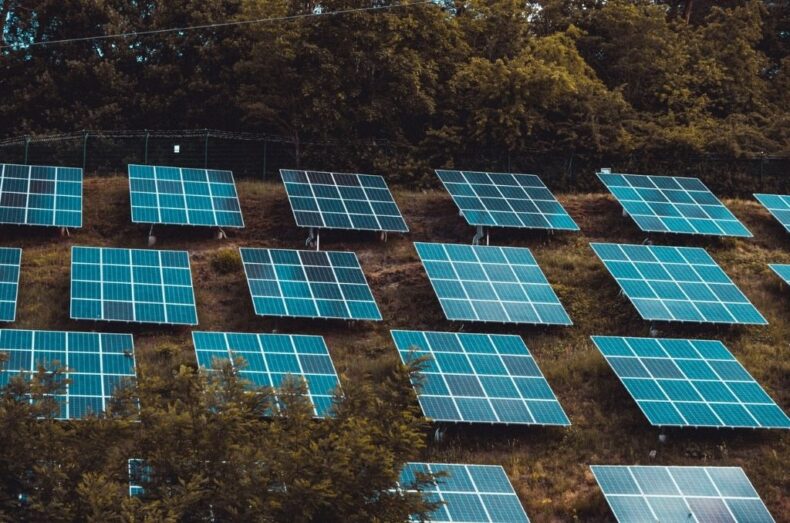Knowing how to choose solar panels for home use can significantly benefit you, especially if you plan on installing the solar system yourself.
There are several key factors to consider when deciding on the best solar panel for your residential setup.
This guide aims to teach you these fundamentals to make an informed buying decision when deciding on the best solar panels for your home.
Table of Contents
What Are The 3 Main Types Of Solar Panels For Homes?
To understand what solar panel is best for your home, you first need to familiarize yourself with the types of solar panels out there.
Each type has advantages and disadvantages that may or may not suit your unique situation.
Monocrystalline
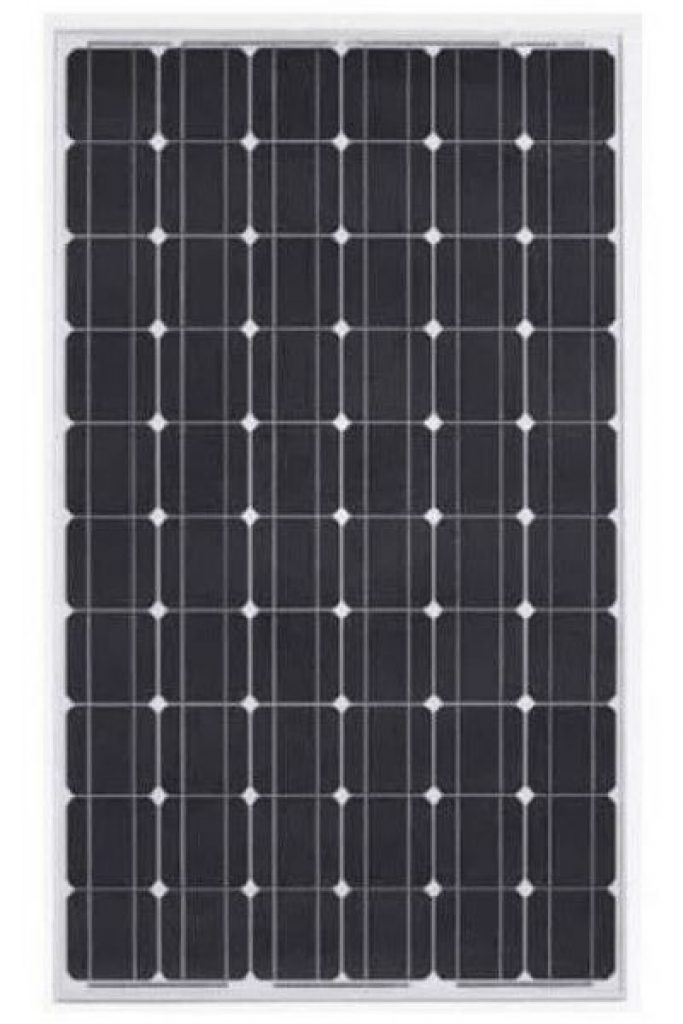
The easiest way to identify monocrystalline solar panels is by their dark color.
These panels are usually dark blue, almost black. This is because of how light interacts with the monocrystalline silicon layer.
Another way to identify these panels is by the small white circles inside the panel’s interior.
Monocrystalline solar panels are best used for their high efficiency, as electricity flow has minimal cell resistance.
Polycrystalline

You can easily spot polycrystalline solar panels by their sky-blue hue.
They are also commonly referred to as multi-crystalline or many-crystal silicon panels.
Because of the high amount of crystals in each cell, there is less space for electrons to flow freely. This results in lower efficiency ratings when compared to monocrystalline panels.
The main reason to choose poly over mono is the price — polycrystalline panels are cheaper.
Thin-Film
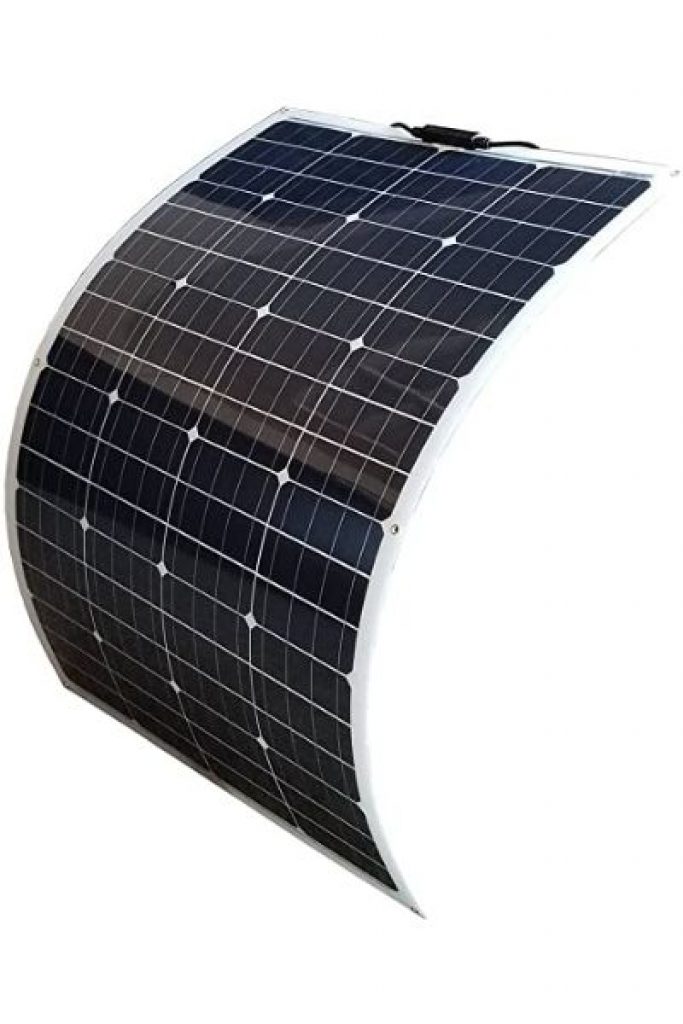
Thin-film solar panels are identifiable by their ability to be warped and bent into a specific angle of your choosing.
They comprise many layers of light-absorbing solar cells, approximately 350 times smaller than a standard silicon solar panel.
Thin-film technology can’t yet compete with traditional solar panels for homes but is slowly starting to show potential.
Is My Home Good For Solar Panels?
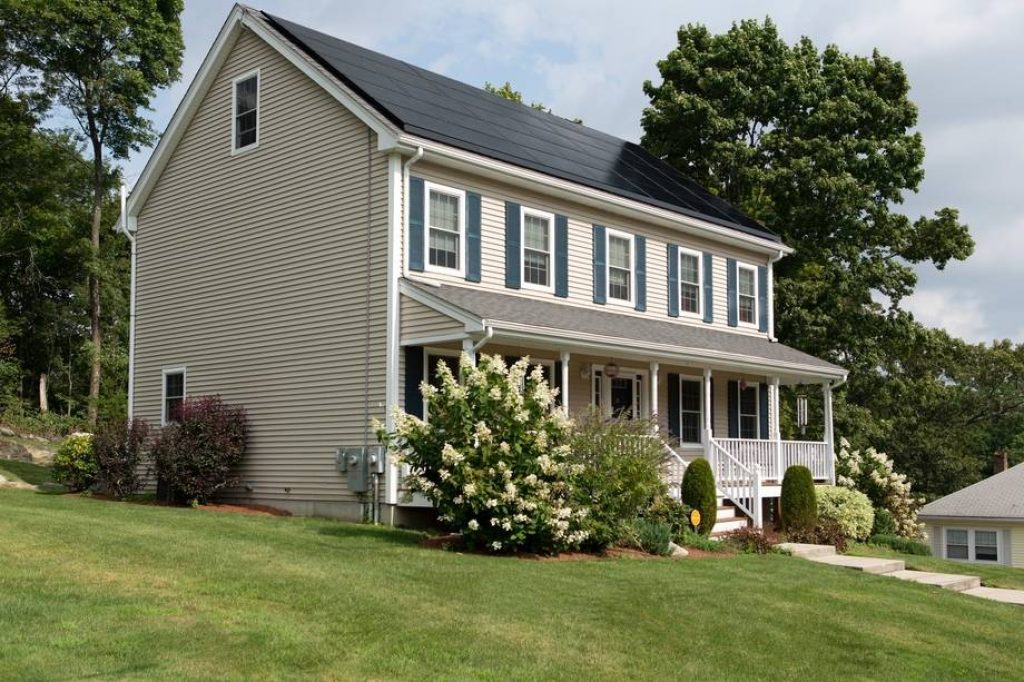
Before you get stuck into finding the best solar panels for your home, you need to determine whether your is suitable for a solar system.
Here are some key questions you need to ask yourself:
1. What Kind Of Roof Do I Have?
It’s no secret that solar panels require a robust and durable roofing structure. Materials such as composite, asphalt shingle, standing seam metal, and concrete tile make ideal roofs for solar panels.
Thankfully, you can still go solar if your roof tiles are:
- Composite metal/stone coated steel.
- Wood shake.
- Slate tile.
- Clay with mortar
However, we recommend hiring a professional to install your solar panels over any DIY options.
2. What Is The Condition Of My Roof?
If your home’s roof is in bad condition, replacing it before installing any solar panels makes sense.
Good quality solar panels for home use can last up to 30 years. You wouldn’t want to remove your entire system to replace the roof first.
Bear in mind that solar panels could pay for the cost of a re-roof 5 years after installation. Therefore, it stands to reason that you should carry out any roof replacements before installing solar panels.
3. How Much Sunlight Does My Home Receive?
Solar panels require sunlight to function — without sun, they are useless.
If your home is within the United States, a fantastic tool you can use to see if your house is a good candidate for solar is Google’s Project Sunroof.
Factors such as roof angle and tree shading affect your home’s potential capacity to capture solar energy.
In short, the more direct sunlight your residence receives, the more energy your solar panels will produce year-round.
4. What Is The Climate Like At My Location?
Understanding the impact of extreme weather conditions on the electricity generated by your home’s solar panels is essential — rainy areas and scorching locations can influence your solar output.
That said, high-efficiency solar panels can still convert direct and indirect sunlight into electricity. In fact, they can even operate on cloudy days, albeit not as efficiently.
Consider highly durable solar panels if your home neighborhood experiences high wind speeds or high levels of snowfall in the winter. With these conditions, you’ll want a solar panel that can withstand the worst weather conditions.
5. What Is My Homes Energy Bill?
As a general rule of thumb, if your utility bill is higher than $75 per month, then going solar will see you making a return on that investment by paying less for that amount of energy.
A monthly utility bill of $75 is the minimum threshold at which residential solar customers will start seeing their solar savings.
Related Reading: Solar Panel Racking (All you need to know about mounting)
How Do You Know What Size Solar System Is Good For Your Home?

Once you’ve decided on the type of solar panel you’d like to purchase, you need to determine your energy requirements. Doing so will help you install the right-sized solar system.
In this section, we will guide you through the entire 3-step solar panel sizing process.
Step 1. Determine The Amount Of Electricity Your Home Uses
First, find your most recent utility bill and see how much energy you have used over the last month.
Most energy bills display your kWh used at the bottom of the document multiplied by the energy cost.
In the following example, our monthly energy usage was 1000kWh, totaling $134,35.
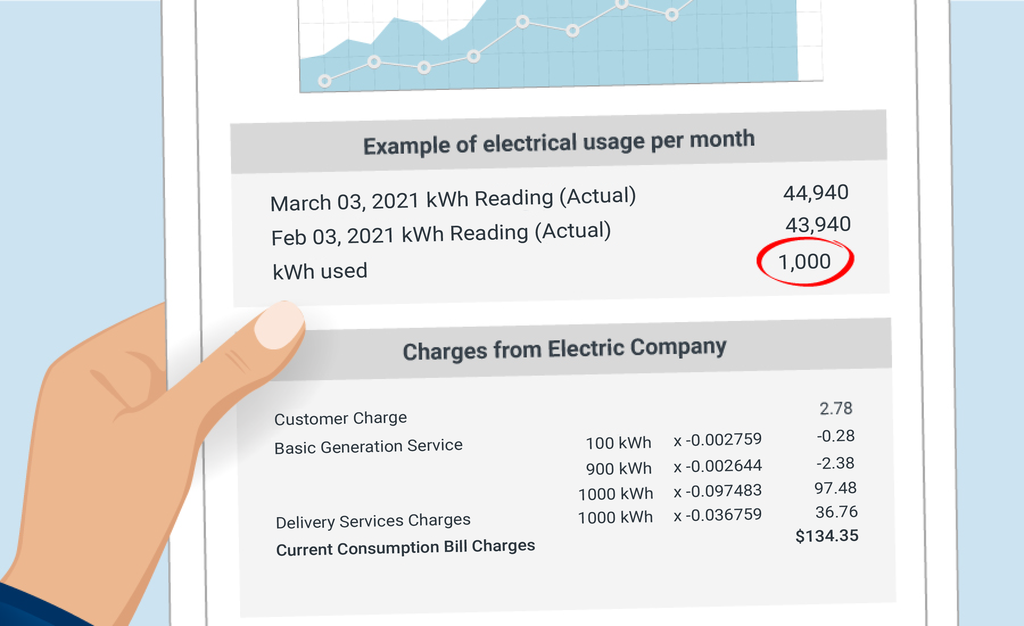
Step 2. Establish The Number Of Sunlight Hours Your Home Receives
Next, you need to determine the amount of sun your roof receives using Peak Sun Hours (PSH).
PSH does not refer to the time measured between sunrise and sunset. Instead, it relates to the amount of time the sun reaches an average of 1000 Watts per square meter.
Certain states, such as California, have a very high peak sunlight rate. If you live in an area with high amounts of sunshine, your home’s overall solar system will not need to be as significant.
Websites such as the National Renewable Energy Laboratory can help you determine how many peak hours of sunlight your area has.
The following table represents the number of peak sunlight hours throughout the United States.
| State | Average peak sunlight hours |
|---|---|
| Arizona | 6.5 |
| California | 5.82 |
| Colorado | 5.37 |
| Florida | 5.44 |
Step 3. Calculate The Size Of the Solar System Your Home Requires
Once your location’s PSH is in hand, it’s time to calculate your monthly amount.
To do this, multiply your daily peak sun hours by 30.
For example, let’s assume you live in Arizona — this state receives 6.5 peak hours of sunlight daily. Now it’s time to multiply that by 30.
6.5 x 30 = 195
Then, divide your monthly electricity usage (let’s use 1000kWh) by your area’s monthly peak sunlight hours.
1000kWh divided by 165 sunlight hours equals 6.0. This means you’ll need 6 kW worth of solar panels for home use to produce enough electricity to cover your monthly energy needs
Here’s a simple chart showing you the solar system you need based on your state.
| State | Average Daily Sun Peak Hours | Average Monthly Sun Peak Hours | Solar System Size |
|---|---|---|---|
| Arizona | 6.5 | 195 | 5,1 kW |
| California | 5.82 | 175 | 5,7 kW |
| Colorado | 5.37 | 161 | 6,2 kW |
| Florida | 5.44 | 163 | 6,1 kW |
By following this methodology, you should know what size solar system is suitable for your home.
How Much Should Solar Panels For Your Home Weigh?
Solar panels for home installations come in a variety of weights. A solar panel’s weight and dimensions are determined by the number of cells they hold.
Reminder: most residential installations are not comprised of a singular solar panel but rather an array.
Subsequently, working out the weight of a single panel will allow you to determine the weight of the entire array you have installed.
Most residential solar system installations are comprised of panels that can produce 300 watts and above.
The average dimensions of a 365-watt solar panel from Candian Solar are the following:
- 1776 mm × 1052mm × 35mm
- Weight: 45 pounds
Assuming your home requires 6 kW of power, you will need approximately 16 x 365-watt solar panels to cover your consumption.
16 solar panels x 45 pounds = 720 pounds
In summary, the weight of your solar panels is determined by the overall energy you require. The more you need, the heavier your system will be.
How Much Do Solar Panels Cost For Your Home?
Average Cost Of Solar Panels For Home Use Based On System Size
| SYSTEM SIZE | AVERAGE SOLAR PANEL SYSTEM COST (BEFORE TAX CREDITS) | AVERAGE SOLAR PANEL SYSTEM COST (AFTER TAX CREDITS) |
|---|---|---|
| 2 kW | $5,620 | $4,159 |
| 3 kW | $8,430 | $6,238 |
| 4 kW | $11,240 | $8,318 |
| 5 kW | $14,050 | $10,397 |
| 6 kW | $16,860 | $12,476 |
| 7 kW | $19,670 | $14,556 |
| 8 kW | $22,480 | $16,635 |
| 9 kW | $25,290 | $18,715 |
| 10 kW | $28,100 | $20,794 |
| 12 kW | $33,720 | $24,953 |
| 15 kW | $42,150 | $31,191 |
| 20 kW | $56,200 | $41,588 |
| 25 kW | $70,250 | $51,985 |
The above prices indicate the cost of a solar system before and after deducting the federal solar tax credit (also known as ITC). This tax credit can reduce your solar system cost by 26%.
Some states and utilities even offer rebates and other tax incentives that reduce solar system costs. We will touch base on this shortly.
Reminder: more extensive solar systems will always cost more upfront. However, they will save you much more money in the long run. Additionally, many low-interest solar loans make investing in solar panels for home use even easier.
Average Cost Of Solar Panel Installation By Brand
| MANUFACTURER | COST PER WATT | PRICE RANGE (10KW SYSTEM) |
|---|---|---|
| Axitex | $2.58 | $22,900 – $28,700 |
| Boviet | $2.53 | $25,300 – $25,300 |
| Canadian Solar Inc. | $2.77 | $24,000 – $31,400 |
| CertainTeed Solar | $2.72 | $25,600 – $28,800 |
| Hanwha SolarOne | $2.80 | $28,000 – $28,000 |
| Heliene | $2.94 | $25,300 – $33,500 |
| Hyundai | $3.02 | $24,800 – $35,600 |
| JA Solar | $3.12 | $28,400 – $34,000 |
| Jinko Solar | $2.84 | $24,600 – $32,200 |
| KYOCERA Solar, Inc. | $5.00 | $50,000 – $50,000 |
| LG Solar | $2.76 | $24,000 – $31,200 |
| LONGi Solar | $3.00 | $26,000 – $34,000 |
| Mission Solar Energy | $2.54 | $23,300 – $27,500 |
| Panasonic | $2.84 | $24,800 – $32,000 |
| Peimar Group | $3.00 | $26,300 – $33,700 |
| Phono Solar | $2.93 | $27,300 – $31,300 |
| Q CELLS | $2.52 | $21,000 – $29,400 |
| REC | $2.91 | $24,400 – $33,800 |
| Risen | $2.34 | $22,500 – $24,300 |
| S-Energy | $3.21 | $25,000 – $39,200 |
| Silfab Solar | $2.79 | $24,200 – $31,600 |
| Solaria | $2.80 | $24,700 – $31,300 |
| SunPower Corporation | $3.30 | $30,800 – $35,200 |
| Talesun Solar Co. | $2.76 | $23,700 – $31,500 |
| Tesla | $2.74 | $24,900 – $29,900 |
| Trina Solar | $2.93 | $26,600 – $32,000 |
| Vikram Solar | $3.07 | $26,400 – $35,000 |
Please note: these prices are BEFORE the 26 percent federal tax credit)
How long Should Solar Panels For A Home Last?
As a general rule of thumb, high-end solar panels will last you between 25 to 30 years. After this time, they will still work. However, they will no longer be as efficient as they once were.

How To Choose Solar Panels For Home Use – Most Important Specifications
As previously mentioned, some of the most critical parameters to consider while choosing your solar panels are:
- Price per watt-peak
- Size
- Weight
- Warranty
When looking at a solar panel’s specifications (at the back of the panel and on the datasheet), you will find more information: Don’t worry; we’ve written a dedicated article detailing panel specifications to assist you.
But for the sake of this article, we only want you to focus on the following:
- Temperature coefficient
- Impp and Vmpp (maximum current and voltage output)
Let’s see why:
Temperature Coefficient
The temperature affects the performance of solar panels (efficiency and power output). The hotter they get, the lower their power output, and they can get as hot as 60°C under full sun.
The temperature coefficient is expressed in percent per degree; it varies between -0.25%/°C for the best solar panels to -0.5%/°C at worst.
For example, if a 500W solar panel has a temperature coefficient of -0.25%/°C and its temperature rise to 60°C (from standard 25°C), the loss in power output is calculated as follows:
35°C*0.25=8.75%
Therefore, the power output will be 456W.
If the temperature coefficient is -0.5%/°C, the loss is doubled to 17.5%; power output will only be 412W.
The difference is significant, so we can only advise you to choose solar panels with the lowest temperature coefficient to minimize the loss.
Impp And Vmpp (Current And Voltage)
A solar panel’s current and voltage is essential information to help build your solar panel array. A solar panel array consists of multiple solar panels wired in series and parallel.
When connected in serry, the current remains the same across the serry. The voltage of the serry is the sum of the voltage of each solar panel.
When connected in parallel, the current is the sum of each panel’s output, and the voltage is the same — equal to the voltage of one solar panel.
For example, building a 6kW solar system consisting of 12 x 500W solar panels (voltage of 42 V and current of 11.9 Amps per panel) and wiring 6 panels in series will produce an array with a voltage of 252V and 11.9 Amps.
If you combine 2 series in parallel, this will lead to an array of 252V and 23.8 Amps (12 panels, 6kW)
In the end, you will need an inverter that accepts your total solar system’s maximum current and voltage.
3 Best Solar Panels For Home Installations
1. Renogy Eclipse 100-Watt Monocrystalline Solar Panel

The Eclipse is one of our favorite 100-watt solar panels on the market, and many van life travelers opt for them.
It’s made from the highest efficiency solar cells Renogy has to offer while weighing in at a mere 15 pounds (6 kg).
The solar cells are encased in a corrosion-resistant aluminum frame; for people living close to the beach, here’s your answer.
2. Renogy 320-Watt Monocrystalline Solar Panel
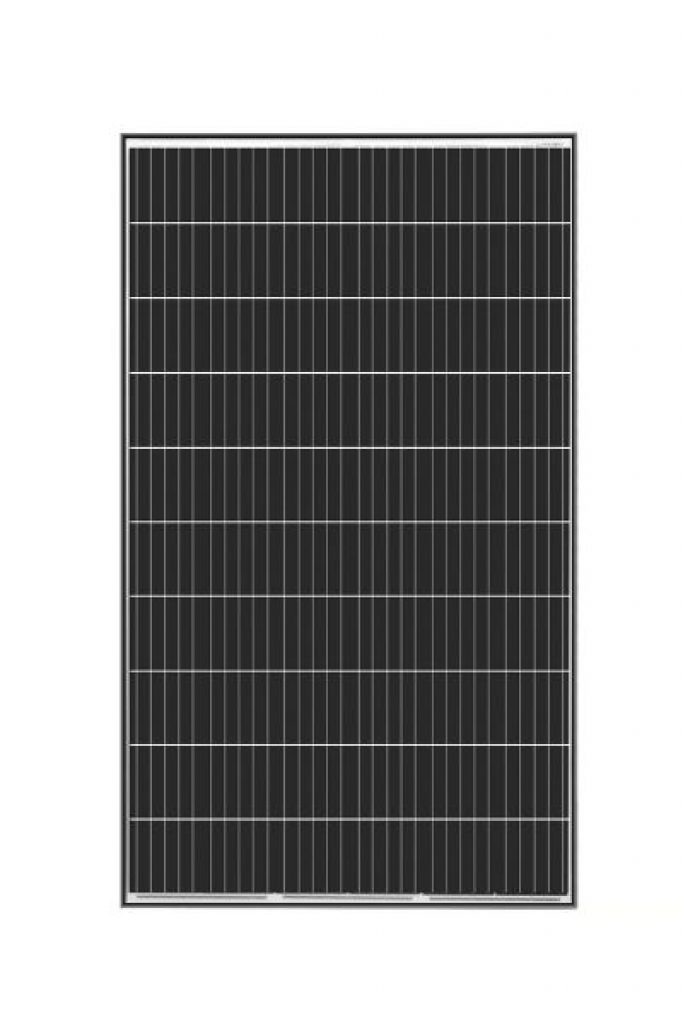
This solar panel is primarily used for residential and commercial purposes.
Rooftop solar systems are the ideal way to decrease your overall electric bill.
This particular panel from Renogy is capable of withstanding high winds, up to 2400 Pa, and snow loads of 5400 Pa
3. Weize 100-Watt Monocrystalline Solar Panel
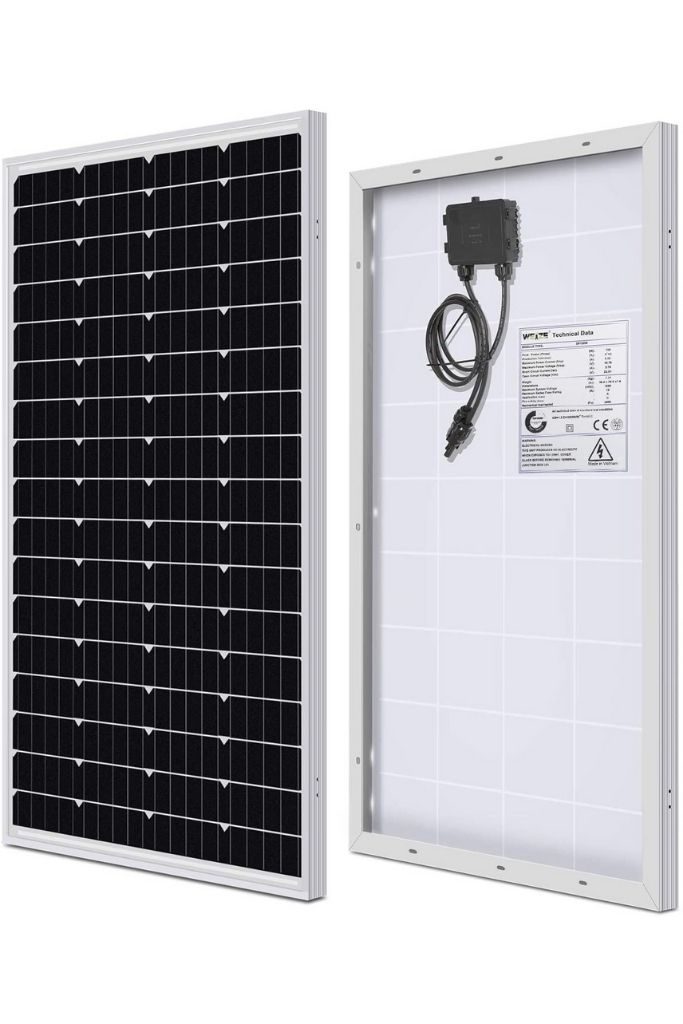
Pre-drilled holes make installing this solar panel pretty easy. It is not our first choice of a solar panel for home use simply because of its low wattage rating.
However, this might be the solar panel for you if you have a smaller home or cabin with fewer energy requirements.
The silicon cells are contained in an anti-corrosion aluminum frame.
Solar Potential By State
Please note that the below table was created using data from Project Sunroof by Google. Data trends come from 2018; we will update it as soon as new data becomes available.
| State | Viable Roofs | Potential MWh AC Per Year | Carbon Offset (Metric Tons) | Cars Taken off The Road (For 1 Year) | Existing Installations |
|---|---|---|---|---|---|
| Alabama | 814,000 | 24,800,000 | 15,800,000 | 3,300,000 | 547 |
| Alaska | 57,200 | 1,100,000 | 450,000 | 95,100 | 83 |
| Arizona | 1,800,000 | 59,100,000 | 25,400,000 | 5,400,000 | 39,700 |
| Arkansas | 370,000 | 11,400,000 | 7,200,000 | 1,500,000 | 239 |
| California | 8,600,000 | 243,000,000 | 67,100,000 | 14,200,000 | 332,000 |
| Colorado | 1,000,000 | 24,700,000 | 15,000,000 | 3,200,000 | 24,000 |
| Connecticut | 609,000 | 12,400,000 | 5,400,000 | 1,100,000 | 5300 |
| Delaware | 148,000 | 3,200,000 | 2,100,000 | 433,000 | 88 |
| Florida | 4,800,000 | 158,000,000 | 84,800,000 | 17,900,000 | 105,000 |
| Georgia | 1,500,000 | 44,700,000 | 26,800,000 | 5,700,000 | 1900 |
| Hawaii | 204,000 | 7,400,000 | 4,700,000 | 987,000 | 25,400 |
| Idaho | 312,000 | 7,500,000 | 2,000,000 | 423,000 | 529 |
| Illinois | 2,100,000 | 47,300,000 | 39,000,000 | 8,300,000 | 2500 |
| Indiana | 1,100,000 | 26,900,000 | 22,300,000 | 4,700,000 | 987 |
| Iowa | 350,000 | 8,800,000 | 4,500,000 | 947,000 | 248 |
| Kansas | 417,000 | 11,900,000 | 8,300,000 | 1,700,000 | 738 |
| Kentucky | 576,000 | 14,000,000 | 10,900,000 | 2,300,000 | 723 |
| Louisiana | 865,000 | 25,900,000 | 16,100,000 | 3,400,000 | 8200 |
| Maine | 100,000 | 2,200,000 | 951,000 | 201,000 | 360 |
| Maryland | 706,000 | 14,400,000 | 9,300,000 | 2,000,000 | 6100 |
| Massachusetts | 1,000,000 | 19,500,000 | 8,500,000 | 1,800,000 | 15,400 |
| Michigan | 1,900,000 | 41,000,000 | 32,200,000 | 6,800,000 | 1700 |
| Minnesota | 770,000 | 18,700,000 | 9,500,000 | 2,000,000 | 1500 |
| Mississippi | 325,000 | 10,400,000 | 6,700,000 | 1,400,000 | 356 |
| Missouri | 1,000,000 | 26,100,000 | 21,000,000 | 4,400,000 | 2900 |
| Montana | 119,000 | 2,700,000 | 721,000 | 152,000 | 261 |
| Nebraska | 283,000 | 6,700,000 | 3,400,000 | 720,000 | 210 |
| Nevada | 569,000 | 17,200,000 | 6,600,000 | 1,400,000 | 12,700 |
| New Hampshire | 107,000 | 2,600,000 | 1,100,000 | 234,000 | 262 |
| New Jersey | 1,600,000 | 34,100,000 | 21,400,000 | 4,500,000 | 12,700 |
| New Mexico | 366,000 | 12,200,000 | 5,200,000 | 1,100,000 | 3800 |
| New York | 644,000 | 9,700,000 | 5,500,000 | 1,200,000 | 1600 |
| North Carolina | 1,400,000 | 39,600,000 | 23,400,000 | 4,900,000 | 2900 |
| North Dakota | 77,100 | 2,300,000 | 1,200,000 | 246,000 | 24 |
| Ohio | 2,200,000 | 48,300,000 | 40,000,000 | 8,500,000 | 2900 |
| Oklahoma | 701,000 | 20,200,000 | 13,700,000 | 2,900,000 | 802 |
| Oregon | 773,000 | 16,500,000 | 4,400,000 | 928,000 | 8700 |
| Pennsylvania | 2,000,000 | 38,200,000 | 25,700,000 | 5,400,000 | 4400 |
| Rhode Island | 203,000 | 3,700,000 | 1,600,000 | 341,000 | 371 |
| South Carolina | 908,000 | 25,700,000 | 15,100,000 | 3,200,000 | 1300 |
| South Dakota | 72,900 | 2,000,000 | 1,100,000 | 222,000 | 21 |
| Tennessee | 1,100,000 | 31,200,000 | 23,700,000 | 5,000,000 | 1300 |
| Texas | 5,500,000 | 160,000,000 | 80,000,000 | 16,900,000 | 14,100 |
| Utah | 573,000 | 15,200,000 | 4,100,000 | 857,000 | 3200 |
| Vermont | 19,500 | 552,000 | 239,000 | 50,500 | 131 |
| Virginia | 964,000 | 23,200,000 | 14,600,000 | 3,100,000 | 2400 |
| Washington | 76,500 | 1,200,000 | 769,000 | 163,000 | 442 |
| West Virginia | 155,000 | 3,300,000 | 2,700,000 | 573,000 | 80 |
| Wisconsin | 901,000 | 23,500,000 | 18,500,000 | 3,900,000 | 1900 |
| Wyoming | 53,100 | 1,300,000 | 400,000 | 84,500 | 29 |
Final Thoughts
In the near future, you can expect 70,000 photovoltaic panels to be installed every hour. Choosing the right solar panels for home use is becoming more critical.
If you have any questions regarding your solar installation, please do not hesitate to contact us in the comments section below.

